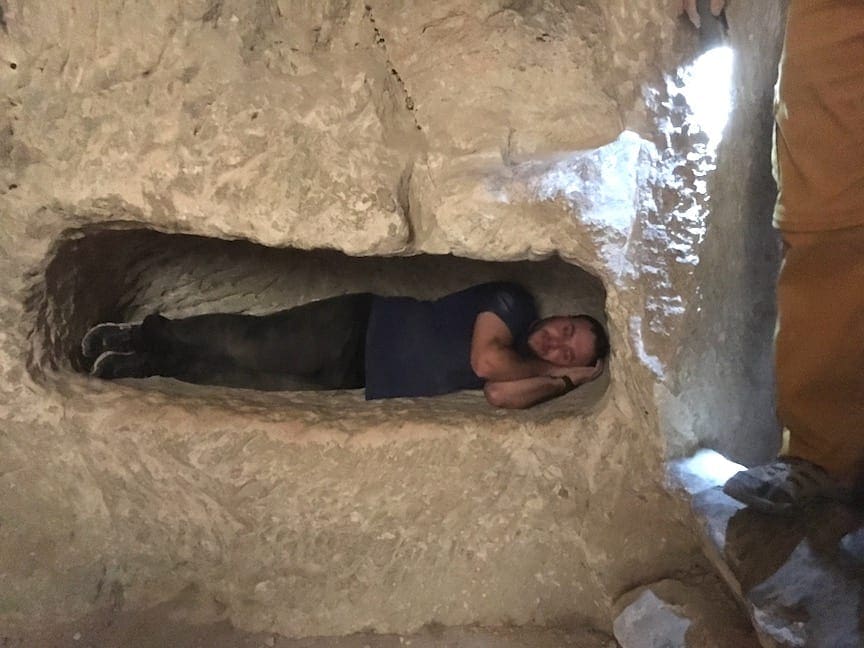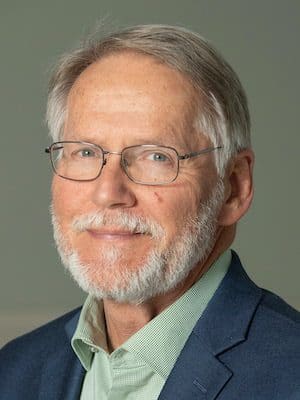Sunday was a day of experiential ups and downs for the Campbell University Divinity School/Nurturing Faith Experiences group traveling in Israel, Palestine, and Jordan. We’re in Jerusalem now, doing our best to work our schedule around the havoc caused by Donald Trump’s impending visit to the city.
We began the day early, managing to be the first group to arrive at the City of David, where archaeologists working on the hill of Ophel – the extent of Jerusalem in David’s time – believe the monumental foundations they have found may have been a palace used by King David. Deep below the City of David is Hezekiah’s Tunnel, which was dug to bring water from the Gihon Spring into the city during times of siege. While the Bible credits it to Hezekiah, who ruled during the late 8th and early 7th centuries (2 Kings 20:20, 2 Chr. 32:30), some archaeologists believe the tunnel may be even older. It is also called the Siloam Tunnel, because the water was channeled into the Pool of Siloam.
While most of the group enjoyed walking through the meandering 1750-foot tunnel – often no more than two feet wide and four feet high, with ankle deep water running swiftly past our feet – some folks walked through a shorter dry tunnel that dates back even earlier, to the Canaanite period.
We paused by the steps of the Pool of Siloam for a devotion led by Liz Britt, who read the story of the blind man Jesus healed there.
After a bathroom stop, we boarded the bus for an amazing display of artistry by our driver, Mike, who threaded several needles with a 60-passenger bus as we left Jerusalem to experience an archaeological dig at Bet Guvrim/Tel Mareshah, in the Shephelah (low hill country) about 30 miles southwest of Jerusalem.
Mareshah was known as the home of the prophet Micah. After Judah was conquered by the Babylonians, the Edomite kingdom expanded westward and took over the area (in time they became known as the Idumeans).
Near Mareshah they discovered that about three feet beneath a hard crust of earth alled nari, there was a layer of soft chalk about 200 feet deep. They began excavating bell-shaped caves beneath their homes, using them for workshops, living space, cisterns, industrial purposes, columbaria for raising doves and pigeons, and so forth.
During the Hasmonean period, John Hyrcanus expanded the renascent Judea southward to incorporate Mareshah, requiring its residents to leave, convert to Judaism, or die.
Most chose to leave, but not before collapsing their houses and filling up the underground caves so they would not be useful to their conquerors.
For the past 35 years, archaeologists have been using volunteers to dig out the caves, bringing both dirt and finds to the surface, then sifting the dirt for smaller finds before turning them over to be studied by professionals.
Participants on the trip enjoyed getting down and dirty, finding everything from pottery shards and bones to an iron arrowhead and a complete oil lamp.
After the dig we enjoyed a late lunch of either schnitzel in a baguette or a Middle Eastern tomato/egg dish called shakshuka, then drove a few miles further south to the tel of Lachish, where Susan and I spent three weeks on a dig in 2015. Lachish was the second largest city in Judah, behind only Jerusalem. It was famously conquered by the Assyrian king Sennacherib in 701 BC, during a campaign when he reportedly destroyed 46 fortified cities and “shut up King Hezekiah like a bird in a cage” by besieging Jerusalem. Hezekiah capitulated and began to pay tribute to the Assyrians, but the city was not destroyed.
A recent dig at Lachish uncovered a shrine to local gods in the city gate, which seems to show evidence of Hezekiah’s reform efforts, because two small horned altars were found with their horns broken off, and a stone toilet was placed on top of them to desecrate the place. I blogged about it a few months ago (read it here).
After a long walk around the tel (picking up a few ticks in the process), we returned to Jerusalem by driving through the Valley of Elah, where David famously fought Goliath, and along a highway that parallels an ancient Roman road that can still be seen in spots. As we rode, Rebekah Gordon led us in a time of devotion.
It was a good day: we got back shortly after six, and although six persons had felt sick enough to rest up in the hotel while the rest of us explored, they were all feeling better when we returned.
Tomorrow: the Old City, if the good Lord is willing and the Secret Service doesn’t rise.
#CUDS_NFtour2017










